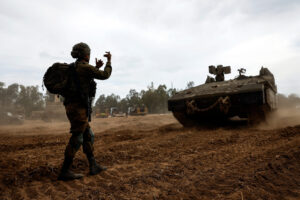WASHINGTON—The U.S. Army today announced a long-term plan to address the health and well-being of horses supporting enhanced funeral honors at Arlington National Cemetery and to ensure the herd can continue to support enhanced military honors for service members.
The Army Military District of Washington (MDW) will begin executing this plan during the 45-day suspension of caisson support to ANC that began on May 1. This pause, based on advice from veterinary professionals, is designed to give the herd time to recover and rehabilitate while the Army implements comprehensive efforts to promote the horses’ long-term health. The Army will closely monitor the herd’s recovery and modify its approach as needed, while developing additional strategies to mitigate the impact of the 45-day suspension on military families.
The improvements implemented by MDW are part of a long-term plan, based on the advice of veterinary and equine professionals, that addresses the health and well-being of the herd and supports the long-term sustainment of enhanced military honors with caisson support at ANC.
The plan has five primary lines of effort:
1. Herd Care and Management. First, the U.S. Army is improving care, rest and recovery of its horses by rotating them through physical therapy; surging hired and contracted trainers to manage their well-being and safe use; and drawing on veterinary and equine expertise to purchase new horses with the right abilities, age, and training.
2. Space and Facilities. Second, the U.S. Army is expanding horses’ access to additional pastureland by leasing certain areas, concluding agreements with other government agencies, and advancing a legislative proposal to transfer 50 acres to the Army. Army officials are now improving the land to maximize herd care and safety.
3. Reduced Weight. Third, the U.S. Army is examining lighter alternatives to its current caisson that could make it possible to quickly resume support to ANC while reducing the burden on the herd as existing horses recover and new additions receive training.
4. Improved Equipment. Fourth, the U.S. Army is working to prototype and procure improved saddles and tack for its horses to ensure better fit and reduce injury rates.
5. Surging support. And, finally, the U.S. Army is surging support to MDW in the following areas: program management, contracting and installations, veterinary and herd care management, and enhanced hiring authorities needed to onboard expertise in the areas of veterinary care and herd management.
These efforts build upon initial actions taken by MDW following the deaths of caisson platoon horses in 2022. Since last year, MDW has made facility upgrades at Joint Base Myer-Henderson Hall and Fort Belvoir, hired a preeminently qualified herd manager and a facilities manager, improved the nutritional quality of hay and feed, and reached a right-of-way agreement with the Bureau of Land Management for the use of 10 acres of land near Lorton, Virginia.
This set of initiatives are part of a long-term emphasis on improving the health of the U.S. Army’s broader equid population. On May 10, 2022, the Army established a task force that is addressing the well-being of U.S. Army-owned horses, donkeys and mules on 12 installations by improving care and feeding of equids, hiring qualified professionals and securing expanded pastureland.
Source: Army Military









